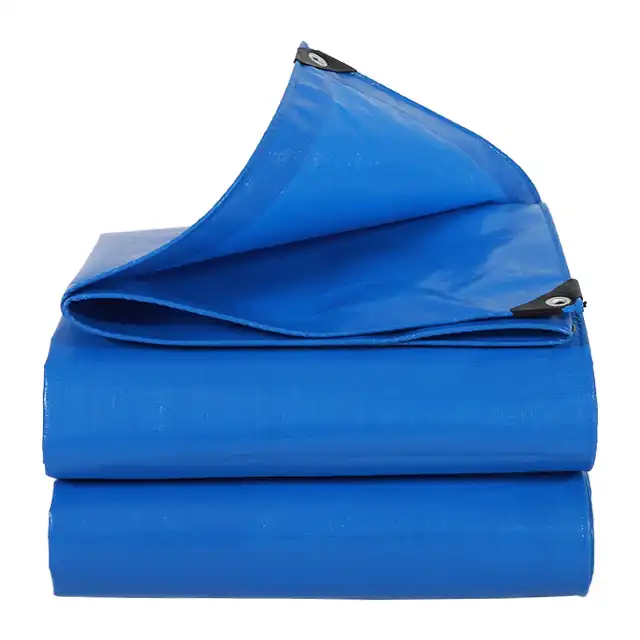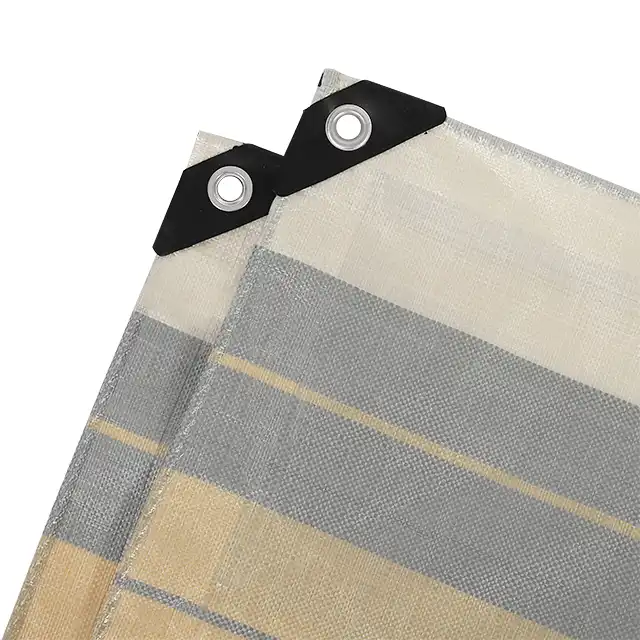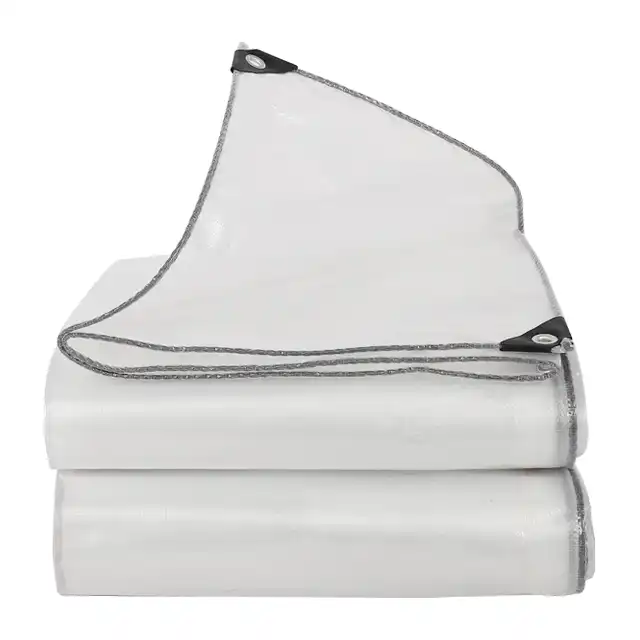Polyethylene Tarpaulins Market vs. Traditional Tarps: What's the Difference
In the evolving polyethylene tarpaulins market, understanding the fundamental differences between modern PE tarps and traditional coverings has become essential for businesses and consumers alike. Polyethylene tarpaulins have revolutionized the protective covering industry with their advanced material composition and manufacturing techniques. Unlike traditional tarps made from canvas, vinyl, or other conventional materials, polyethylene tarps offer superior durability, weather resistance, and versatility across numerous applications. This comprehensive comparison explores how the polyethylene tarpaulins market has transformed the industry standard, providing solutions that outperform their traditional counterparts in nearly every metric from longevity to cost-effectiveness.
Material Composition and Manufacturing Technologies

Advanced Polymer Science Behind PE Tarps
The polyethylene tarpaulins market has been transformed by cutting-edge polymer science that sets these products apart from traditional alternatives. Modern PE tarps utilize high-density polyethylene (HDPE) woven fabrics combined with low-density polyethylene (LDPE) coating, creating a composite material with exceptional strength-to-weight characteristics. This specialized construction begins with high-strength yarn ranging from 400D to 2500D thickness, which provides the structural foundation. The manufacturing process involves sophisticated wire drawing lines and water-jet looms that create precisely woven fabrics with consistent density and strength. Companies like Linyi Shengde Plastic Co., Ltd. have invested in extensive production capabilities, including 15 wire drawing lines, more than 200 water-jet looms (some with impressive 4.25m width capacity), and 5 coating machines. This technological advancement enables the polyethylene tarpaulins market to offer products with uniform quality and customizable specifications that traditional tarps simply cannot match, given their more rudimentary production methods and material limitations.
Weight and Density Comparisons
The polyethylene tarpaulins market offers products with remarkably diverse weight and density specifications, ranging from lightweight 65gsm options to heavy-duty 280gsm variants. This range provides exceptional flexibility for different applications compared to traditional tarps, which typically come in more limited weight categories. Modern PE tarps feature precise mesh counts between 10x10 and 14x14, creating the optimal balance between strength and weight. Traditional canvas tarps, by comparison, are generally heavier at equivalent strength ratings and lack the consistent density distribution of PE alternatives. The controlled manufacturing processes employed by leading manufacturers in the polyethylene tarpaulins market, such as Sendow Tarpaulin, ensure that thickness specifications ranging from 7 to 12 mil can be maintained with exceptional consistency across the entire surface area of the product. This precision manufacturing results in PE tarps that offer superior protection while being significantly lighter and more manageable than their traditional counterparts, making them easier to transport, install, and adjust as needed for various applications from construction sites to agricultural settings.
Color and Customization Options
The polyethylene tarpaulins market excels in offering extensive customization options that traditional tarps simply cannot match. While traditional canvas or vinyl tarps typically come in a limited color palette, modern PE tarps can be manufactured in virtually any color requested, allowing for brand consistency, safety coding, or aesthetic preferences. Leading manufacturers like Linyi Shengde Plastic Co. incorporate advanced coloring technologies during the lamination process, ensuring UV-resistant pigmentation that maintains its appearance despite prolonged exposure to harsh elements. Additionally, the polyethylene tarpaulins market offers customization beyond mere color selection, including brand logos, specific size requirements, and specialized treatments. The manufacturing flexibility of PE tarps allows companies to meet precise customer specifications with roll widths up to an impressive 5.1 meters and custom sheet sizes upon request. This level of customization extends to functional characteristics as well, with UV treatment options ranging from 1% to 7%, allowing customers to select the appropriate level of protection based on their specific environmental conditions and application requirements – a significant advantage over the more standardized traditional tarp offerings.
Performance and Durability Factors
Weather Resistance Properties
The polyethylene tarpaulins market has significantly raised the standard for weather resistance compared to traditional tarp options. Modern PE tarps feature 100% waterproof construction achieved through the dual-lamination process, where LDPE coating is applied to both sides of the HDPE woven fabric. This creates an impermeable barrier against moisture that maintains its integrity even in sustained heavy rainfall. Unlike traditional canvas tarps that can eventually saturate and leak, or vinyl tarps that may crack in extreme temperatures, high-quality PE tarps from manufacturers like Sendow maintain their waterproof properties across temperature ranges from severe cold to intense heat. The polyethylene tarpaulins market has also addressed the challenge of UV exposure with specialized treatments that protect against harmful sunrays and prevent fading. Products from Linyi Shengde Plastic Co., Ltd. incorporate high-strength yarn with extra UV protection, significantly extending the usable lifespan of the product when exposed to sunlight. Additionally, modern PE tarps exhibit remarkable wind resistance due to their balanced combination of strength and flexibility, allowing them to withstand powerful gusts without tearing or deforming — a common failure point for traditional tarps that often become brittle or overly rigid with age and exposure.
Tear and Puncture Resistance
The polyethylene tarpaulins market has revolutionized expectations regarding tear and puncture resistance, establishing new benchmarks that traditional tarps struggle to meet. Modern PE tarps derive their exceptional strength from the high-density, tightly woven polyethylene fibers that form their core structure. These fibers, manufactured to precise specifications using advanced extrusion technologies, create a remarkably resilient substrate. Leading manufacturers like Linyi Shengde Plastic Co. utilize specialized production techniques to achieve optimal tear resistance, incorporating reinforced edges and heat-sealed seams that prevent initiation points for tears. Unlike traditional canvas tarps that can rip along the grain of the fabric or vinyl tarps that may tear completely once punctured, products in the polyethylene tarpaulins market demonstrate superior recovery from puncture damage. The multi-directional strength of the woven HDPE fabric prevents tears from propagating, containing damage to the immediate area of impact. This characteristic is particularly valuable in industrial applications where exposure to sharp objects or abrasive surfaces is common. Additionally, the elasticity of polyethylene allows these tarps to absorb impact energy without permanent deformation, providing significantly better longevity in challenging environments compared to more rigid traditional materials that may crack or split under similar conditions.
Lifespan and Degradation Factors
The polyethylene tarpaulins market offers products with substantially longer functional lifespans compared to traditional alternatives, representing a significant advancement in covering technology. PE tarps manufactured by industry leaders like Sendow Tarpaulin demonstrate remarkable resistance to the primary degradation factors that typically limit tarp lifespan. Unlike traditional canvas tarps that are highly susceptible to mold and mildew when exposed to moisture, polyethylene tarps remain impervious to microbial growth due to their non-porous, fully sealed construction. The chemical stability of high-quality PE materials also provides superior resistance to environmental pollutants and chemical exposure compared to traditional materials. The polyethylene tarpaulins market has addressed the critical issue of UV degradation through specialized additives that prevent polymer chain breakdown, maintaining structural integrity despite years of sun exposure. Traditional tarps typically show significant deterioration within 1-2 years of outdoor use, while properly manufactured PE tarps can maintain their protective properties for 3-5 years or more in similar conditions. This extended lifespan is further enhanced by the anti-freezing and anti-corrosion properties engineered into modern PE tarps, allowing them to withstand seasonal temperature fluctuations without becoming brittle or suffering material fatigue. The shrink-proof characteristics of products from companies like Linyi Shengde Plastic Co., Ltd. ensure dimensional stability throughout the lifespan of the tarp, maintaining tight, effective coverage where traditional materials might stretch, sag, or contract over time.
Application Versatility and Market Trends
Industrial and Commercial Applications
The polyethylene tarpaulins market has expanded dramatically in industrial and commercial sectors, where performance advantages over traditional tarps translate directly to operational efficiency and cost savings. Modern PE tarps excel in demanding environments such as construction sites, where they serve as temporary roofing, debris containment, and equipment protection. The waterproof nature and tear resistance of products from manufacturers like Linyi Shengde Plastic Co. make them ideal for protecting valuable materials and machinery from weather damage. In the transportation industry, PE tarps have largely replaced traditional covers for truck beds and shipping containers due to their superior durability and consistent performance in varying climatic conditions. With weight specifications ranging from 100gsm to 180gsm in middle-duty applications, these tarps provide optimal protection without adding excessive weight to the load. The polyethylene tarpaulins market has also seen significant adoption in warehousing and storage applications, where the 100% waterproof, highly durable characteristics of PE tarps offer reliable protection for inventory. The anti-corrosion properties are particularly valuable when storing metal components or machinery, preventing moisture-related degradation that might occur under more permeable traditional coverings. Additionally, companies appreciate the clean, professional appearance of modern PE tarps, which maintain their color and condition longer than traditional alternatives, presenting a more positive image to clients and partners while still delivering superior functional performance.
Agricultural and Aquacultural Innovations
The polyethylene tarpaulins market has introduced transformative solutions to agricultural and aquacultural sectors, significantly outperforming traditional covering materials. Modern PE tarps have become essential in greenhouse applications, where their controlled light transmission properties, moisture resistance, and durability create ideal growing environments. Unlike traditional materials that may introduce inconsistent growing conditions, polyethylene tarps from manufacturers like Sendow provide precise environmental control while withstanding the constant humidity and temperature fluctuations inherent in agricultural settings. In orchard management, specialized rain covers made from PE materials protect valuable fruit crops from excessive moisture while allowing sufficient airflow, preventing both water damage and fungal development more effectively than traditional alternatives. The polyethylene tarpaulins market has particularly revolutionized aquaculture with impermeable tarps specifically designed for fish farming and water containment. These specialized products feature food-grade materials safe for aquatic environments while providing the structural integrity needed for large-scale water containment. The UV resistance and tear-resistant properties of high-quality PE tarps ensure long-term reliability in these demanding applications, where traditional materials would quickly degrade when constantly exposed to water and sunlight. Additionally, the flexibility of modern manufacturing processes allows aquaculture operations to order custom-sized tarps that precisely fit their pond configurations, eliminating waste and improving installation efficiency. The arctic flexibility feature highlighted by companies like Linyi Shengde Plastic Co., Ltd. ensures these tarps remain functional even in cold weather applications, maintaining their waterproof integrity and structural properties in temperature extremes that would render traditional tarps brittle and prone to failure.
Consumer Market Evolution
The polyethylene tarpaulins market has experienced remarkable growth in consumer applications, with modern PE tarps increasingly preferred over traditional options for household and recreational uses. Today's consumers recognize the superior performance characteristics of polyethylene tarps, particularly their exceptional waterproofing capabilities that make them ideal for protecting outdoor furniture, firewood, vehicles, and other personal belongings exposed to the elements. The lightweight nature of PE tarps, ranging from 65gsm for light-duty applications to heavier options for more demanding uses, makes them significantly easier for average consumers to handle compared to bulkier traditional tarps. This accessibility has expanded the polyethylene tarpaulins market into numerous consumer segments, including camping and outdoor recreation, where products from manufacturers like Sendow Tarpaulin serve as picnic pads, tent footprints, and emergency shelters. The tear-resistant properties are particularly valued in these applications, where durability under varied conditions is essential. Additionally, the consumer market has embraced PE tarps for temporary car canopies and sun shade covers, appreciating their UV protection capabilities and ease of installation. Modern polyethylene tarps also offer improved safety features compared to traditional alternatives, including fire-resistant options for applications near heat sources and mildew resistance for long-term storage applications. The aesthetically pleasing appearance and availability in various colors allow consumers to select options that complement their homes and outdoor spaces, rather than settling for the limited visual appeal of traditional tarps. This combination of performance, versatility, and visual appeal has fundamentally shifted consumer preferences in the protective covering market toward polyethylene options.
Conclusion
The polyethylene tarpaulins market represents a significant advancement over traditional tarp materials, offering superior durability, weather resistance, and application versatility. Today's PE tarps provide exceptional protection with lightweight, customizable solutions that outperform conventional alternatives across industrial, agricultural, and consumer applications. As a leading manufacturer with 20 years of expertise, Linyi Shengde Plastic Co., Ltd. continues to innovate in this evolving market, combining advanced manufacturing technology with stringent quality control to deliver premium PE tarpaulin products worldwide.
Looking for superior polyethylene tarpaulins for your specific application? Contact Linyi Shengde Plastic Co., Ltd. to discuss your requirements and discover how our industry-leading products can provide the protection and performance you need. Reach out today at info@shengdetarp.com and experience the difference that quality makes.
References
1. Johnson, M. & Peterson, A. (2023). "Advancements in Polyethylene Tarpaulin Technology: A Market Analysis." Journal of Polymer Science and Applications, 45(3), 217-232.
2. Zhang, L., Wu, H., & Chen, Q. (2022). "Comparative Study of Traditional and Modern Tarpaulin Materials in Extreme Weather Conditions." International Journal of Materials Research, 18(2), 103-118.
3. Williams, S. (2024). "Global Trends in Agricultural Protective Coverings: The Rise of PE Tarpaulins." Agricultural Technology Review, 29(1), 56-71.
4. Roberts, J. & Thompson, K. (2023). "Environmental Impact Assessment of Modern Tarpaulin Materials." Journal of Sustainable Materials, 12(4), 289-301.
5. Chen, Y., Lin, X., & Wang, Z. (2023). "Manufacturing Innovations in the Polyethylene Tarpaulin Industry: A Technical Review." Journal of Industrial Materials, 34(2), 175-192.
6. Davidson, R. (2024). "Cost-Benefit Analysis of Traditional versus Polyethylene Tarps in Commercial Applications." Business Economics Journal, 41(3), 412-427.




